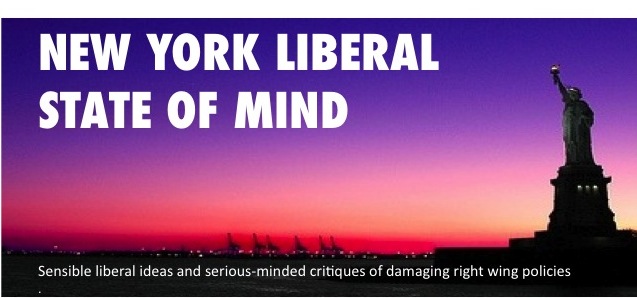Anyone who came of age in the 1960s remembers, if not from direct reading than from media coverage and informal discussion, Michael Harrington's landmark work on poverty, The Other America.
In painstaking detail, Harrington detailed the effects of race, ethnicity, gender, education, vocation and geography upon the material well-being of 1/3rd of our population. There were, and are, two Americas.
As Barron Laycock said in a reconsideration and review of The Other America earlier this decade:
It is a sad truth that Harrington's book is as timely and as shocking today as it was some forty years ago. His account of the fate of millions of impoverished people of color and ethnicity remains as cogent and as relevant as it was then. Despite the long and tortured history of the social legislation that attempted to rework this problem in the decades since, the reality of the situation seems to be that nothing much has changed in terms of the life-chances and hopes of the members of the underclass.
The government announced yesterday that there are 44 million people living below the poverty line. Although the census data from which that number was drawn has yet to tease out the rest of the story, one can be reasonably certain that there is an equal number of people living in the next tier up from abject poverty. Further, we can add in the individuals and families who are struggling from the effects of the Great Recession and who, while perhaps not definitionally poverty-stricken, have found themselves staring into an abyss heretofore only populated by men, women and children very different from themselves.
So we can safely say that 100 million people in the United States live in poverty or are so close that for all intents and purposes they live in a psychological impoverishment that intensively affects their quality of life.
That's 1/3rd of our population, 40 million of whom are children under 18, few of whom will ever escape the poverty cycle if past history is any sign post.
The entire shadow hoard of poor, near poor and the poor-in-waiting is the bitter fruit of not only slavery, ethnic hate, and sexism, but today is also the product of the most despicably disingenuous government policies that favor the wealthy to an obscene extent.
Even more crazily, the most hopeless of the poor live but a few minutes or miles from the insatiable rich, like serfs prostrate at the gates of the barons' castles.
A perfect illustration of the two Americas exists in Fairfield County, Connecticut, a mostly suburban county outside New York City. Its largest city is Bridgeport.
Twenty-one per cent of Bridgeport's population lives below the poverty line; another 41% live in the next level just above the poverty line. Sixty-two per cent of a city of roughly 135,000 souls - or 84,000 - people live in poverty. Meanwhile in the town of Fairfield, 4 miles away from Bridgeport meaured downtown to downtown, a mere 4% of the population hovers in the two zones below or just above the poverty line.
In 2006 Fairfield was ranked as the ninth best place to live in America, and the second safest by Money Magazine. Its murder rate is less than one per year.
On the other hand, Bridgeport's violent crime rate is 1.6 times the national average.
"Coincidentally," Bridgeport is 30% African-American and 33% Hispanic while Fairfield town is more than 95% white.
Now the struggle rages in Congress about whether to allow the Bush tax cuts on the wealthy to expire.
The argument for keeping those cuts in place is that those earning over $200,000 create jobs with the money that otherwise would be going to taxes. In Bridgeport proper, the unemployment rate is 19%. The percentage of people who have never worked (and thus are unaccounted for in such statistics) is 12%.
The Bush tax cuts have been in effect for the better part of 10 years. So much for the job creation theory.
To circle back to Michael Harrington and The Other America: deepening the travesty is the virtual blackout imposed upon this story by the (dreaded) mainstream media.
Where are the special segments, the documentaries, the 5 part articles in the New York Times, Washington Post, Chicago Tribune, etc.?
The frivolous media - right and left leaning - collectively turns its head. Instead, they luxuriate inside their silly echo chamber whose compass points are The Beltway, Wall Street, angry white America, and Lindsay Lohan (or other suitably fashionable proxy). Unjust, immoral and irresponsible. The Fourth Estate not only doesn't mitigate the problem, but helps perpetuate it by turning the blind eye.
Thomas Carlyle wrote in his Heroes and Hero Worship in History (1841) that Edmund Burke once said:
"...There were three Estates in Parliament, but in the Reporters Gallery yonder, there sat a fourth Estate more important far than they all."
But that was one upon a time, very long ago.
.
Friday, September 17, 2010
100 Million Poor - And Continuing Tax Cuts For The Rich
Labels:
Bridgeport,
census,
Edmund Burke,
Fairfield,
poverty,
tax cuts,
the media,
the rich,
the wealthy
Subscribe to:
Post Comments (Atom)





No comments:
Post a Comment